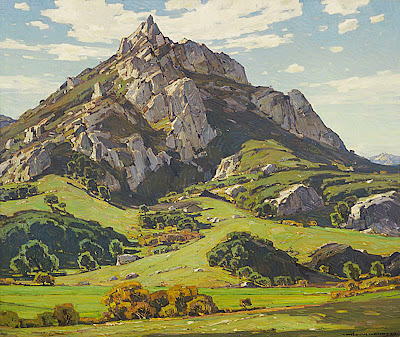James Gurney hits it out of the park again with his new art instruction book Color and Light: A Guide for the Realist Painter. Following the success of his other art instruction book Imaginative Realism, which was released last year, Gurney’s new book Color and Light is filled with everything you will want to know about these two important subjects, written in a clear and concise style. This is not a step by step how to book per se but there are plenty of explanations describing the effects of color and light and how to use them in your paintings. The images accompanying the text are made up of James Gurneys own plein air paintings, figure studies and illustrations for his professional assignments. Over 300 color Illustrations and diagrams.
Beautifully printed and designed, Color and Light is sure to be considered the text on the subject for years to come. Gurney writes about this subject as a successful, professional artist. This is not someone who doesn’t make their living as a painter or some scientist who only observes but offers no practical application for his information. The paintings by Gurney are a feast for the eyes, his talent is showcased well here and you see the depth and breadth of his formidable abilities as an artist. He has included images of city scenes, portraits, landscapes, illustrations for National Geographic, magazine articles, science fiction and fantasy book covers and his own series of Dinotopia books. The sheer amount of work is amazing and you begin to understand that here is someone who loves the process of making art.
Many people know Gurney as one of the premier illustrators in the world and the author of the Dinotopia books, but for those who don’t follow his excellent blog gurneyjourney, they may be surprised to find he has always been an avid plein air painter as well. His landscapes are just as accomplished as any of his illustrations. Many of these small outdoor landscapes are showcased in this book and make up a third of the color illustrations. This is important because it is his work painted outdoors from life that infuse his real and imagined scenes with a sense of light.
Some books are considered classics in the field of art instruction; Harold Speed’s The Practice and Science of Drawing, John F Carlson’s Guide to Landscape Painting, Andrew Loomis’ Figure Drawing for all its Worth and Creative Illustration, Edgar Payne’s The Composition of Outdoor Painting, and Richard Schmid’s Alla Prima. Jim Gurney’s Color and Light is one of these books. There is no excuse for you not to buy this book, it is very reasonably priced and the wealth of information in it will help anyone interested in representational art. Whether you are a seasoned professional or Sunday hobbyist, this is the book for you.
You can order Color and Light: A Guide for the Realist Painter from the Dinotopia website where James will sign copies if requested
http://www.dinotopia.com/dinotopia-store.html
The book is also available from all the usual book retailers like Barnes and Noble, Amazon and Borders
The book is also available from all the usual book retailers like Barnes and Noble, Amazon and Borders
For more information on James Gurney visit his websites
http://jamesgurneyoriginalart.blogspot.com/



























